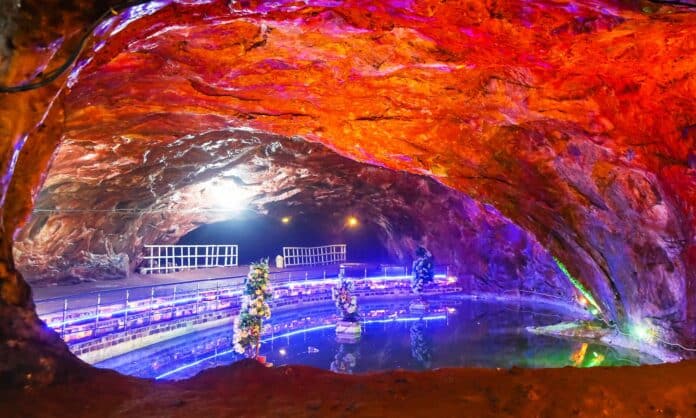This article is all about khewra salt mines. Read the article till end to know more interesting facts and information about these famous salt mines.
Pakistan has the world’s second-largest salt mine, country’s northwest part is the khewra salt mines location. The Khewra Salt Mine, which is becoming an extremely popular tourist site, is a wonderful sight! Horses from Alexander the Great’s army happened onto the mine by chance. Visitors are encouraged to purchase excellent salt lamps and other decorative goods.
About khewra salt mines
Many people are unaware that Pakistan is host to the world’s second biggest salt reserves, which are located in the district of Jhelum in the Punjab province.
This complex of salt mines, also known as the khewra mines location is around 160 kilometers south of Islamabad at the slopes of the Salt Range, approximately 15 kilometers north of the Jhelum settlement of Pind Dadan Khan.
In the Khewra Salt Mine, salt can be found everywhere, which can be a little monotonous for tourists. However, by constructing structures out of salt bricks and lighting them with different lights, the government is making the visit a little more exciting for visitors.
Tickets for visiting the mine are available for purchase for 220 Pakistanis Rupees per person, with a reduced rate of 110 Pakistani Rupees for students and children.
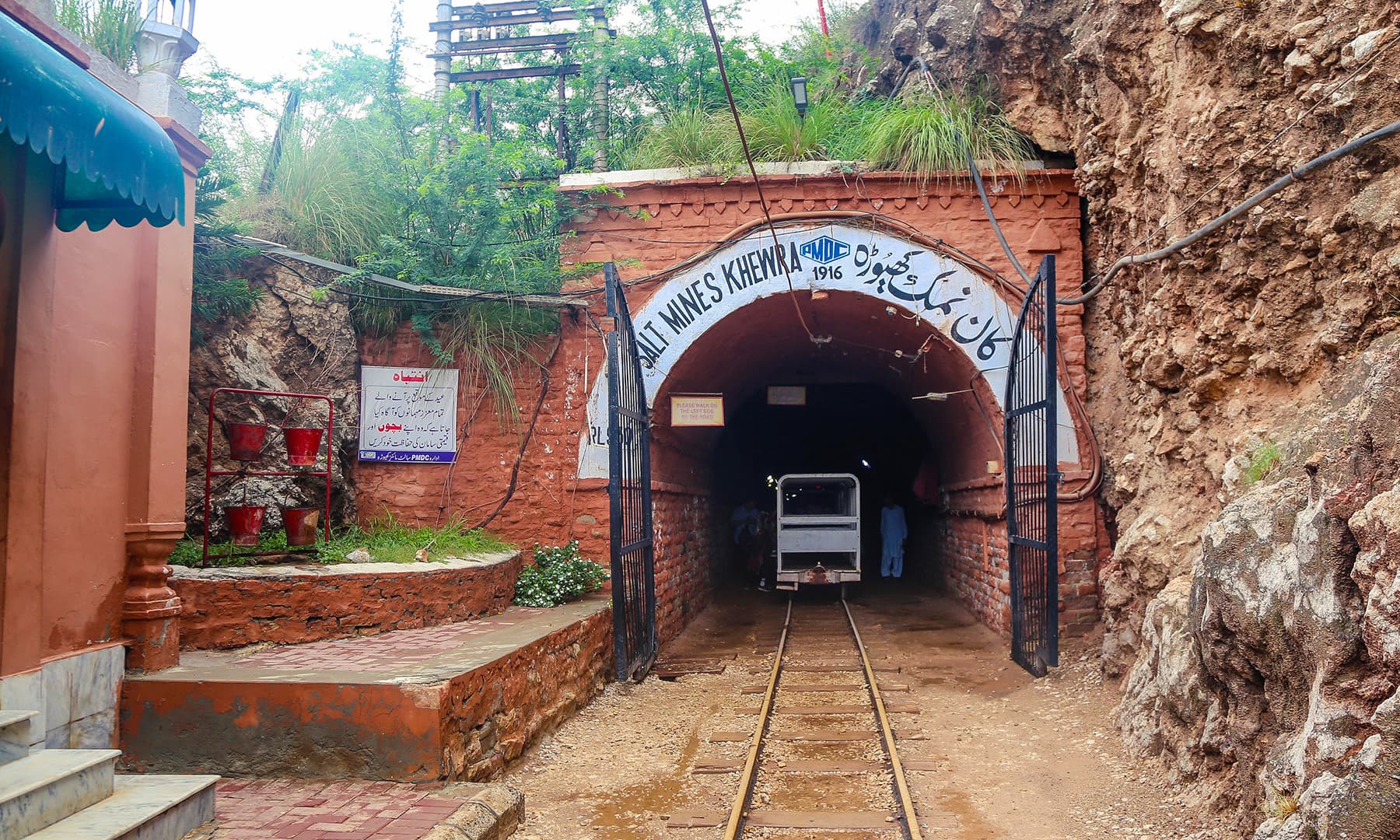
People usually ask questions about khewra salt mines timings and how long it is or how much times it takes for its complete visit. So it is usually open between 9 am to 5pm for visitors and the mine stretches around 730 meters (2440 feet) into the mountain from the entry, and the entire route of its tunnels is approximately 40 kilometers (25 miles).
Brief History
The narrative of the unearthing of the Khewra Salt Mine is bizarre, but it is also realistic in certain ways. In 326 BC, Alexander the Great’s army was marching through Pakistan when it paused at Khewra for a brief resting period. After noticing how the horses started licking the rocks, a soldier replicated the behavior — and that’s how the salt mines were found.
Fast forward to present, and the Khewra Salt Mine has grown to become the world’s second largest salt mine, trailing only the salt deposits mine in Goderich, Canada, in terms of production. Simply considering their size can provide an understanding of the mines’ overwhelming scale.
Khewra Mine Structure and Shape
The Khewra Salt Mines are the earliest salt mines in the history of salt mining on the Indian subcontinent. In the form of an irregular dome-like structure, salt is found in nature.
It is possible to find seven broad salt seems with a combined thickness of around 150 meters. Rock salt can be found in regions that are 99 percent pure. Transparent, white, pink, reddish, or beef-color red are the colors of salt. It appears to be crystalline at certain horizons. It is possible to see stunning alternate streaks of red – and – white colored salt inside the mine.
There are a total of 18 different working levels. The total distance traveled by all drivers is more than 40 kilometers. The area is quite stunning to visit… Additionally, this centuries-old salt mine is now offering experimental asthma medication, drawing people from all over the world to this location.
The mines are filled with architectural wonders such as mosques, a copy of the Minar-e-Pakistan, a sanatorium, Chaghi mountain, and various other brightly colored structures made entirely of salt bricks. The monuments are illuminated from within by lights.

Another popular feature in the mines is the brilliant Sheesh Mahal, also known as the palaces of mirrors, which has walls made of clear salt and water pools that are lighted with colorful lamps. The salt bridges that connect the lit ponds and chambers are a unique feature of this installation.
Besides being known for its high-quality salt, Khewra is also known for its gypsum, marble, lime clay, potash, coal, and a variety of other minerals.
Annual Salt Production
The mines are regarded to be the most ancient in the history of salt mining on the subcontinent. Salinity was assessed to be 98 percent pure in 2018, resulting in an annual production of 389,134 tonnes of pure salt.
In addition to the cash generated by the production, a substantial amount is generated by the approximately 40,000 visitors who come to the site every month.The anticipated yearly production of pink, white, & red salt is about 347,000 tons, with the majority of it being sold to China, India, the United States, and Germany.
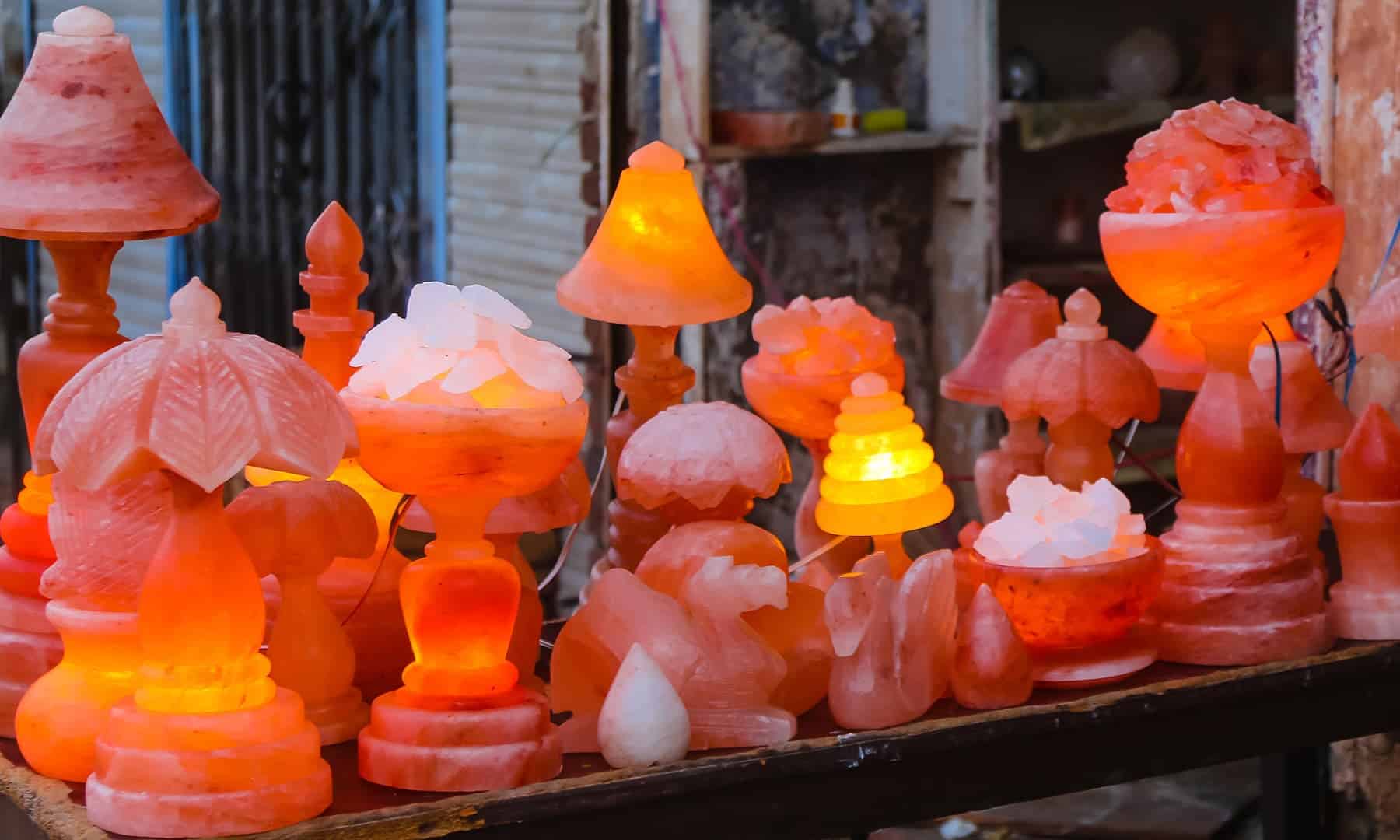
An interesting thing to know is that around half of the Himalayan salt discovered is mined, with the remaining half serving as columns. In order to ensure that these vast mines remain extremely durable and do not collapse on themselves, this is done mostly for safety reasons.
A worth-visiting place
It is not only locals who go to the mines, but also international tourists, bloggers, and vloggers who pay a visit. There are a great number of students from various schools, colleges, and universities among the tourists, who appreciate visiting the site and seeing the mines for themselves after studying about them on the books.
There is no comparison between Khewra Mine and any other tourist attraction in the globe; the mine is a treasure trove of facts and history.
A trip to the Khewra Salt Mine would never be in vain, and you will undoubtedly have a great time while you are there.
PMDC’S Asthma Resort
People who suffer from respiratory problems are claimed to benefit from the mines’ atmosphere because of the natural qualities of rock salt, which alters the air within the mines. PMDC has established an Asthma Resort deep underground, which was attracting sufferers from all around the world since it opened its doors in 2009.
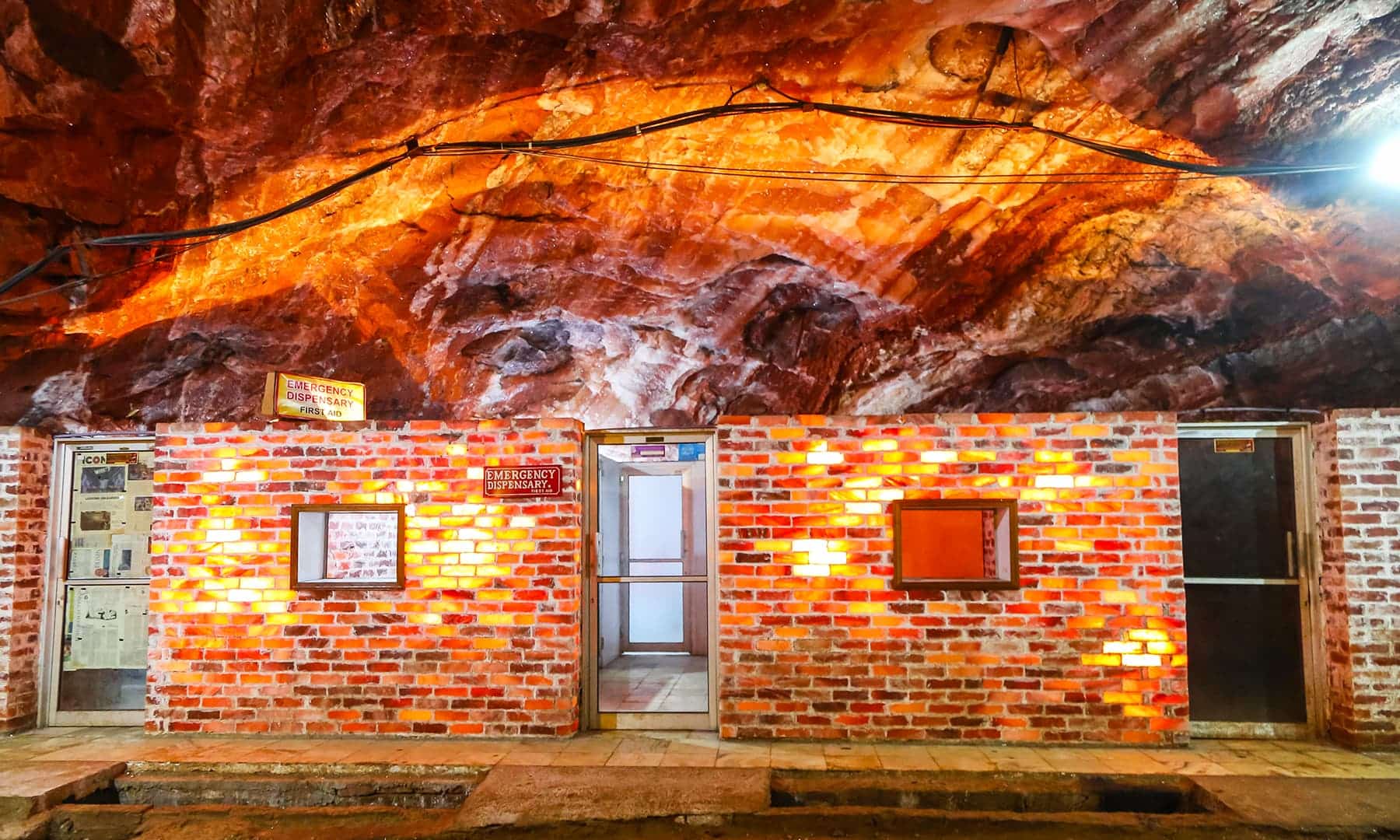
The welcome room of the resort is decorated with a fountain, armchairs, and a television, creating a warm and inviting atmosphere. The clinic officially consists of twelve beds, which are housed in six cabins constructed of salt bricks. The entire room is softly illuminated with bulbs, and fans offer ventilation to preserve the’micro-climate,’ which is supposed to be helpful for patients and visitors.
Exploring the Mine
That’s correct. You could ride a miner train here if you ever wanted to. The electric train that connects the mine entrance to the main hall is reported to date from the 1930s. However, it is in fine functioning order, and tickets are sold per person. A group of 12 or more would pay each trip rather than per person. You can also walk into the mine to tour it with your own time.
The train trip terminates in a 75-metre-high hall, the mine’s main cavern. The vastness of space frequently inspires awe. There is a natural carving of Allama Iqbal in the wall here.
After saying your goodbyes to the train, you’ll most likely see the Badshahi Mosque, which is located within the center chamber. The mosque is unique in that it is entirely formed of rock salt, with a variety of colored salt bricks. Because the mine is known for its white, pink, and crimson salt deposits, you can imagine how amazing this building is, particularly when lit by lights buried in crevices along the walls. Two of the mosque’s minarets are made of rock salt.
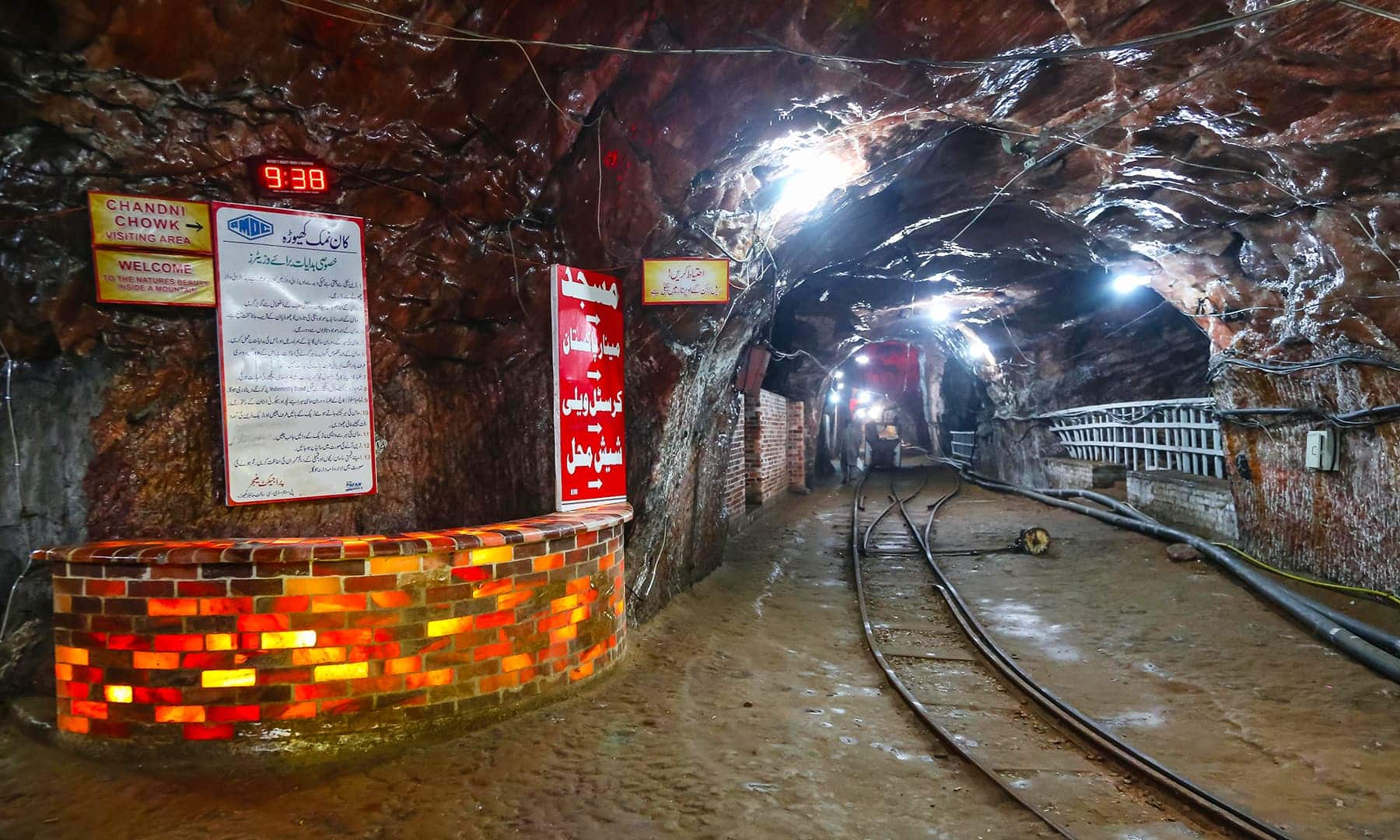
If you thought the mosque was impressive, wait until you see these. The main tunnel also has miniature rock salt copies of major monuments. Among which are China’s Great Wall, Pakistan’s Minar-e-Pakistan, Lahore’s Shimla Hill, and Murree’s Mall Road. To enhance the splendor of the multi-coloured salt, each monument has been brightly lighted.
The Khewra Salt Mine also has the world’s only salt-brick post office. Mine workers utilize it as a perfectly functioning post office.
While there is no actual salt flowing from this fountain, it has been given this name cos of the natural shape that this salt creation has evolved over the years, which gives it the appearance of a water flowing fountain.

If you are familiar with the Dead Sea and how that is so salty that everything floats, you will have a better understanding of what the ponds discovered within the Khewra Mines are like. If you are not familiar with the Dead Sea, click here. Despite the fact that they are not permitted to be used, there are multiple salt water ponds scattered throughout the mines. To make it easier for you to traverse the ponds, bridges have been constructed.
Known locally as Pul Saraat, this thin 25-foot-long bridge spans a 100-foot-deep pool of salt water and was erected in the early 1900s. The fact that this bridge is created entirely of salt and does not rely on beams or supports is what makes it so special.
Although a tunnel within the mine is renowned as Sheesh Mahal, this is not because it has a palace monument, but because the salt roof of the tunnel reflects the weak lighting in a way that makes it appear as if it were a mirror. As course of the guided trip, you will get the opportunity to explore the tunnel.


